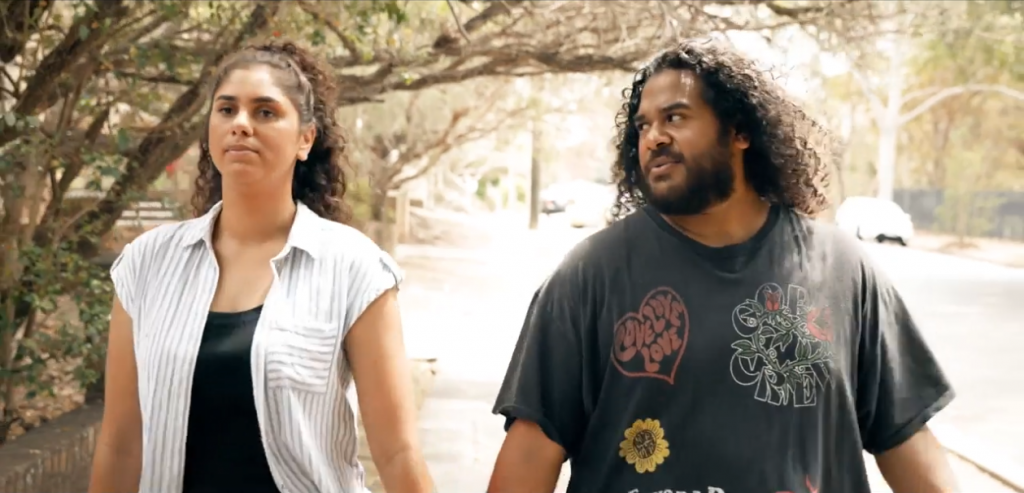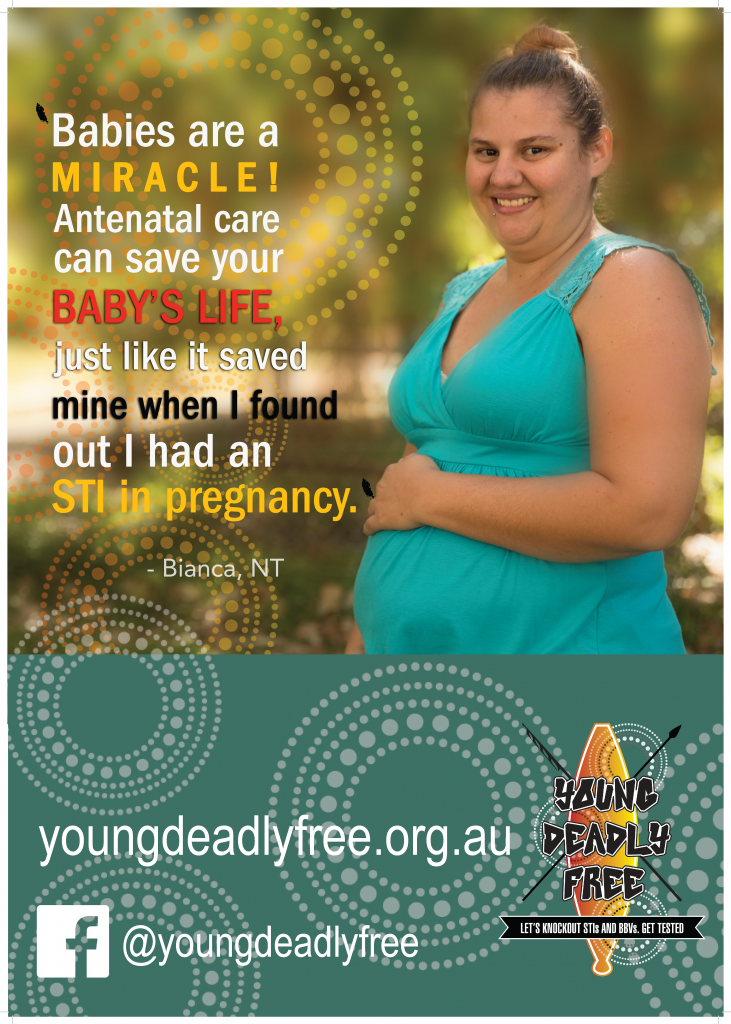
It’s a powerful message on the need for young people to look after their sexual health for themselves and their community.
It’s also a perfect example of the focus on empowering messaging and collaboration with local communities which underpins the work of Young Deadly Free.
Professor James Ward is a Pitjantjatjara and Narungga man, Director of the UQ Poche Centre for Indigenous Health, and has led Young Deadly Free since its creation in 2016. James says Young Deadly Free came from the need for resources on syphilis and STIs “developed with strength-based approaches, humour, local talent and factual information”.
Young Deadly Free aims to increase STI and blood-borne virus (BBV) testing and treatment amongst young Aboriginal and Torres Strait Islander people. The project reaches young people through social media campaigns, traditional media like television and in-language radio ads, and resources ranging from infographics and fact sheets to posters and videos.
There are also resources to support families, Elders, educators and healthcare professionals in understanding STIs and BBVs, and communicating with Aboriginal and Torres Strait Islander young people about them.
Community involvement key
Young Deadly Free collaborates and co-designs with local ACCHOs, peak organisations, and young people to ensure their resources and initiatives are appropriate, authentic, and appealing.
For example, when developing a suite of video resources for healthcare professionals, local community members were involved in co-writing scripts and local clinicians starred in the videos.
“We didn’t use superstars or celebrities. We just used local talent, and that’s really important,” says James. “We used local Aboriginal Health Workers to star in all the videos that we produced and local humour to reinforce the very important messages that we’re trying to get across.”
“Without all of that collaboration, it wouldn’t be a very successful project,” says James.
of surveyed young people described Young Deadly Free’s videos as ‘Deadly’ or ‘Very Deadly’
(source)
It’s not just being relatable which helps Young Deadly Free’s messages to reach and connect with young people so well. Young Deadly Free also takes a strength-based approach to public health messaging, helping to break down stigmas around STIs and BBVs and empower young people to feel confident asking about and discussing their health.
Promoting positive relationships
Reducing shame around challenging topics is key to Young Deadly Free’s recent suite of videos focused on diverse and respectful relationships, consent, and gender. The videos and topics were guided by a national advisory group comprised of Aboriginal and Torres Strait Islander young adults.
“We do know this country has a problem with gendered violence and issues around control and unequal relationships,” explains James. “We’re trying to get the messages out to our people that you can say ‘no’, that it’s not part of our culture to have disrespect.”
“We made the resources very non- judgemental, trying to break down stigma about lots of different things. Not only unfair or unequal relationships, but also sexuality and gender diversity. They’re actually part of our community and we want to embrace that as much as the rest of the world is trying to.”
“We shouldn’t be left behind because we don’t have the resources to be able to get that conversation going.”
We've all got a part to play
James encourages healthcare professionals to use Young Deadly Free’s free resources to support increased testing and treatment for Aboriginal and Torres Strait Islander young people, and promote inclusion. Healthcare professionals can also access clinical resources and manuals, as well as videos featuring experienced health workers.
“There’s some beautiful resources and our people really resonate with them,” says James.
“We want to continue developing resources as time goes on because we’ve got a very long way to go to reducing STIs in our communities, but also getting to a point where we have very equal relationships, no homophobia, and no gendered violence in not just our communities, but the whole of Australia.”
“So we’ve all got to do our little bit to push these messages out.”
You can access Young Deadly Free’s resources and training on their website. You can also check out their social media pages on Facebook, Instagram, TikTok, and X.


